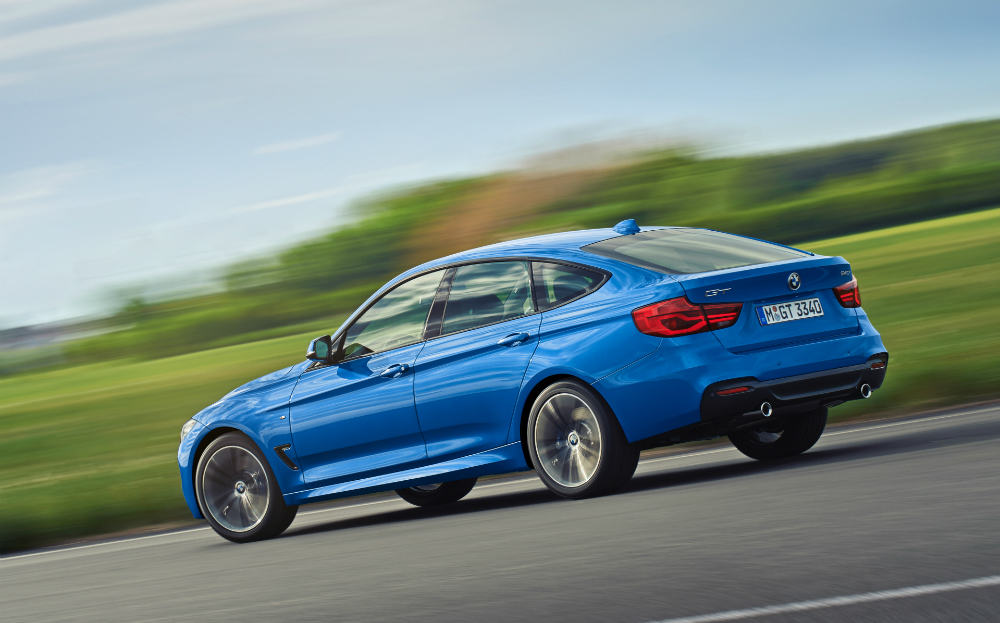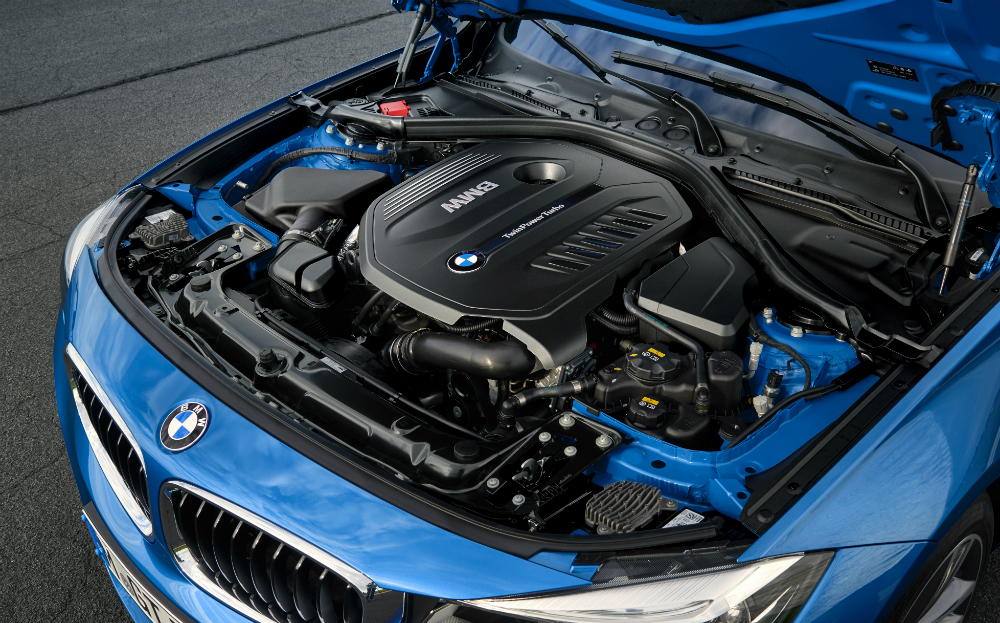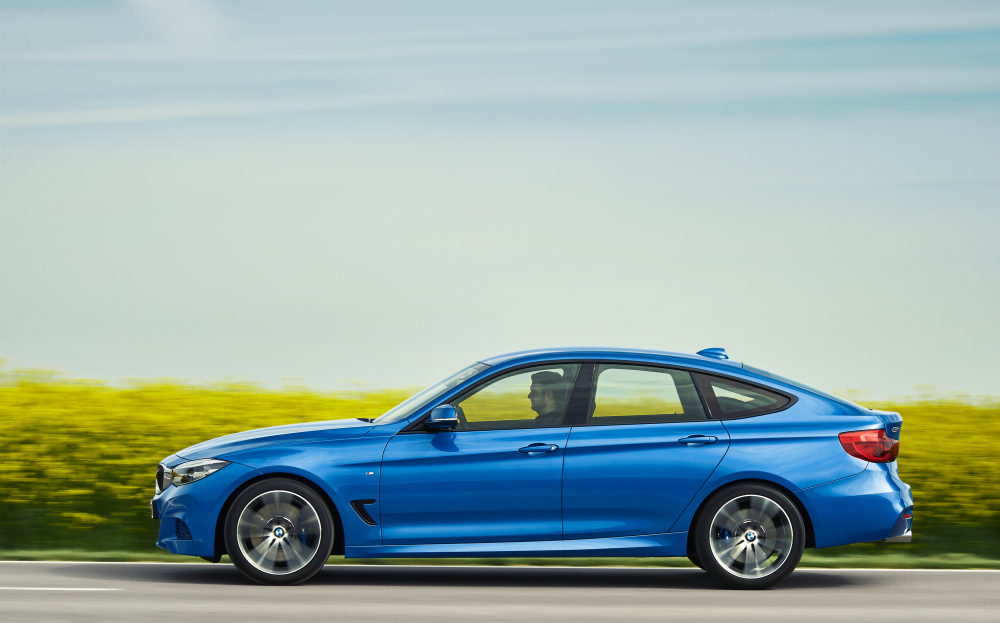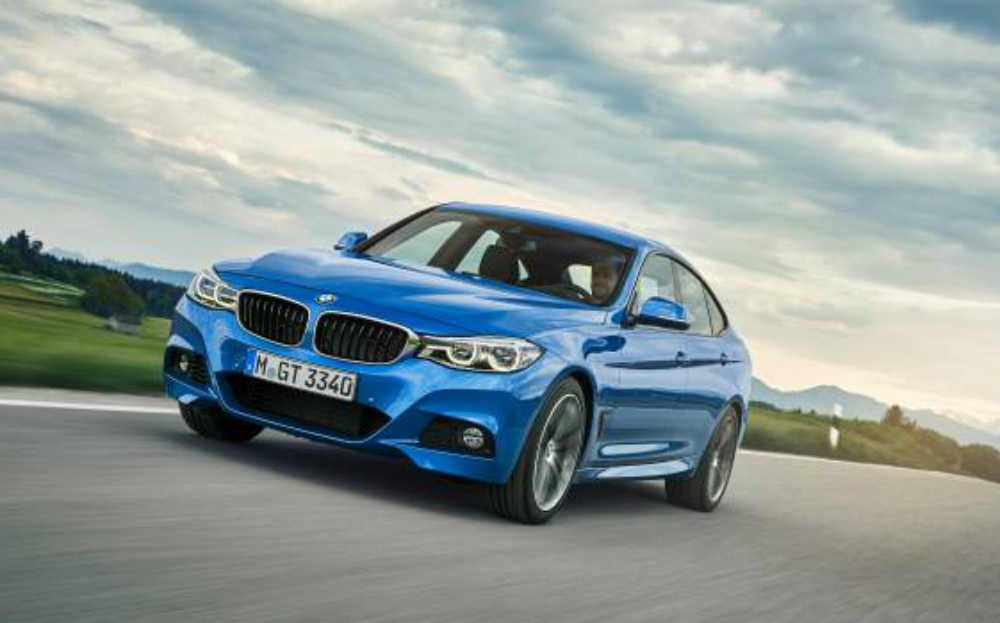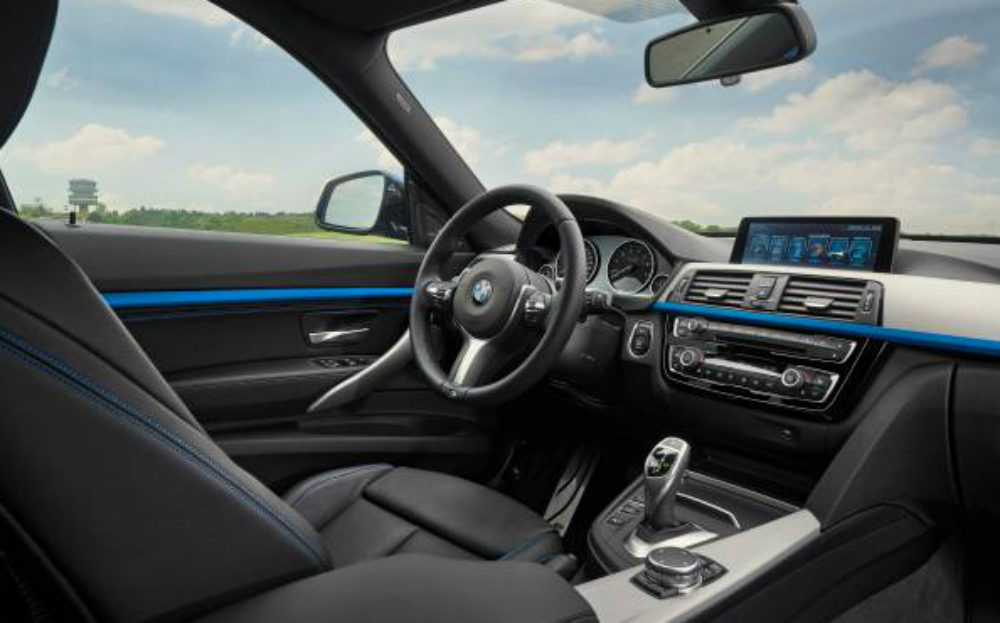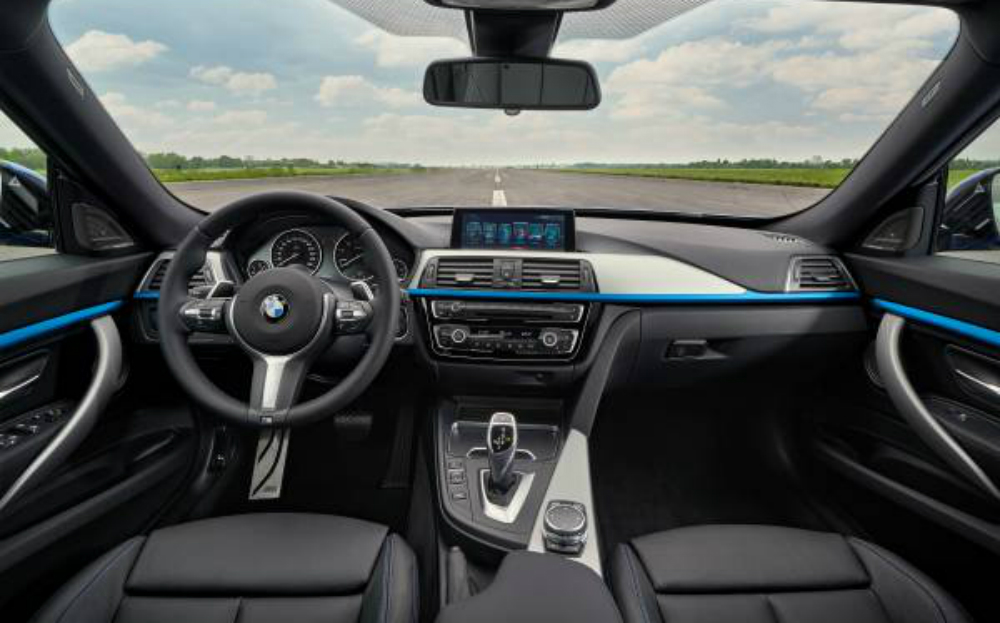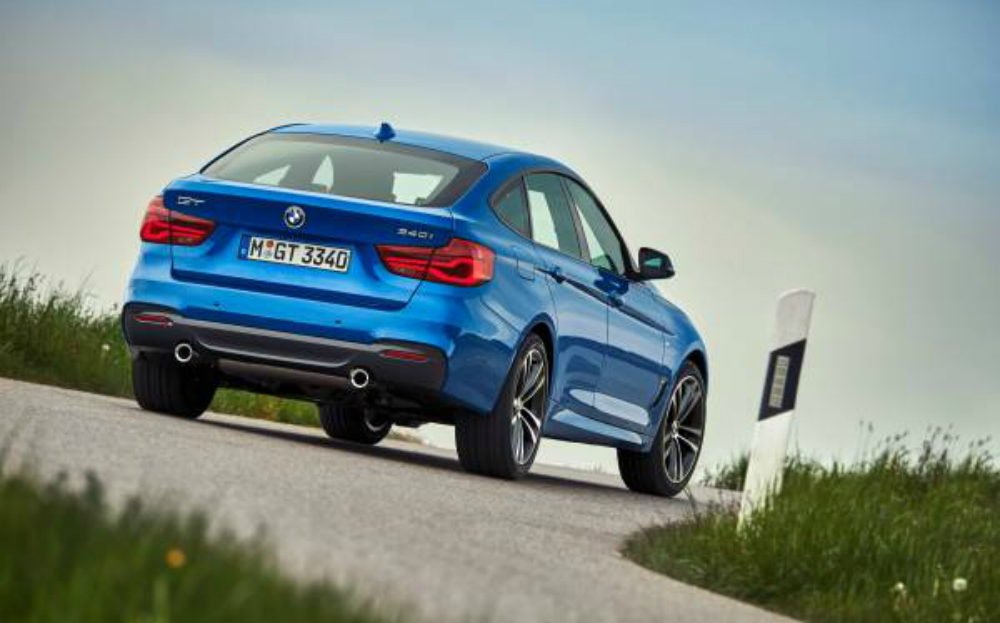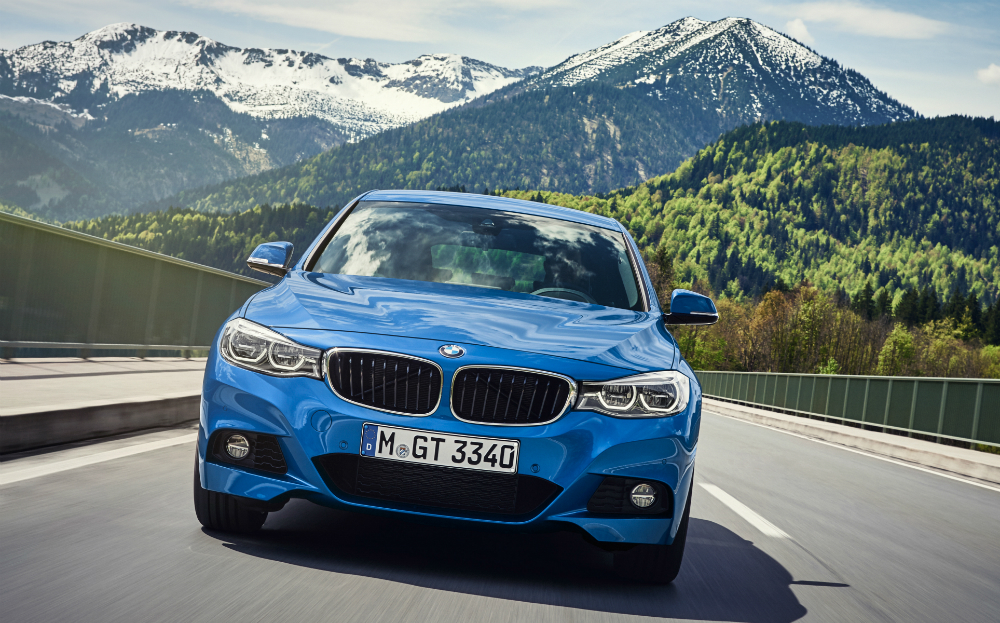First Drive review: 2016 BMW 3-series Gran Turismo (340i)
Mild makeover means mild improvements
THREE YEARS ago, when the Grand Touring version of the 3-series was launched, sceptics wondered at the sense in shoehorning a hatchback into the small space between the evergreen saloon and Touring estate versions. What rising executive would want to be seen in a hatch, even one called a GT?
Well, those same sceptics should be dining royally on their words because the GT has been a runaway success, with over 140,000 sold since its launch in 2013. Germany, China and the US are particular fans.
One can only assume it’s the GT’s blend of comfort, accommodation and practicality they like so much. BMW appears to think so because this mid-life refresh sees improvements to all three, plus new, more efficient engines and subtle styling tweaks to keep the whole plot looking fresh.
Browse NEW or USED cars for sale on driving.co.uk
The single, most impressive improvement is the new wheelbase – now 110mm longer between the front and rear wheels. As a result, BMW claims there’s as much room in the back of the new GT as a 7-series. This expansion goes to the heart of the model’s appeal. A pity headroom is no greater. Tall folk may now be able to stretch out even more fully but they’ll still feel hemmed in by that sloping roofline, a sensation compounded by the GT’s raised rear seats. Those full-size rear seats split 20:40:20, helping to make the most of a large boot whose dimensions remain at 520 litres seats up or 1600 litres, seats down.
Styling revisions to the front of the GT extend to the fitment of new-look LED headlights (low and hi-beam) and foglights, and modified, sportier-looking air intakes. At the rear, the tail-lights feature BMW’s new L-shaped light signature, there’s a new lower apron and the exhaust pipes are larger. The changes don’t amount to much on paper but on the road the car definitely looks sharper and more confident – and so it should.
The launch of the new GT was accompanied by the release of BMW’s new Connected suite of driver services meant to seamlessly link the car with your Apple iPhone or Watch (BMW says more platforms will be enabled in the future). The GT features the new cloud and app-based system as standard. For the moment it only offers a – very useful – journey management service. You register car and phone, and Connected scans your contacts and calendar for journey-related data. It then calculates journey times, taking into account traffic densities, and notifies you when you should depart.
It all works as BMW promised. When we started the GT, it recognised our phone, imported our appointment and destination data from its calendar, and activated the car’s sat nav to begin route guidance, all without us touching a button. Incidentally, for the first time, BMW’s Navigation system Professional, which includes wireless phone charging, is fitted as standard.
Elsewhere, the interior has had a mild makeover. It feels marginally more luxurious thanks to additional chrome edging and decorative wood elements. As before, the front seats are deep, well shaped and supportive although they are now higher, improving visibility.
The new engine range is drawn from BMW’s EfficientDynamics family of twin-turbocharged petrols and diesels, launched in 2015. The 340i is the star of the three petrol engines on offer. It’s not a 3.4-litre as the numbers suggest; instead, it’s a still very appealing 3.0-litre straight six producing 322bhp, or 7% more power than the outgoing 335i. Torque is up 38lb ft, too.
It’s perfectly suited to the GT’s character: silky smooth but with lightning-quick responses when roused. On the autobahn it morphed from relaxed and composed cruiser to snarling sprinter in a second. It comes with a Steptronic automatic as standard (there’s no manual option), which helps the transformation.
xDrive four-wheel drive brings more sharpness and a tidier line to the table
However, the four and six-cylinder diesels – there are five in total – will be the big sellers. Petrol and diesel engines are usefully cleaner and more efficient, the more so for being paired with features elsewhere on the GT including automatic stop-start, brake energy regeneration and the economy-oriented ECO PRO driving mode.
The 3-series GT is rear-wheel drive as standard but all 18 variants can be specified with BMW’s xDrive four-wheel-drive system that hurts economy slightly but improves traction. It’s worth considering since without it, the standard GT, which, let’s face it, is set up to be comfortable first, is a little blunt-edged in corners. Instead, xDrive brings more sharpness and a tidier line to the table.
They should call the new 3-series GT the ‘evolution’, the changes are that natural and considered. The GT was always a good idea; what it lacked in sparkle it made up for with comfort, cabin space and practicality. Now, with the arrival of the new version, those virtues have been enhanced, and joined by greater driving thrills and sharper looks. There’ll be a collective sigh of relief in BMW’s marketing department if the GT’s sales curve continues to defy those early naysayers.


